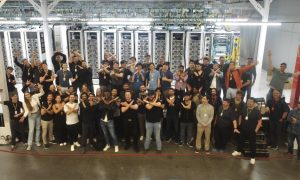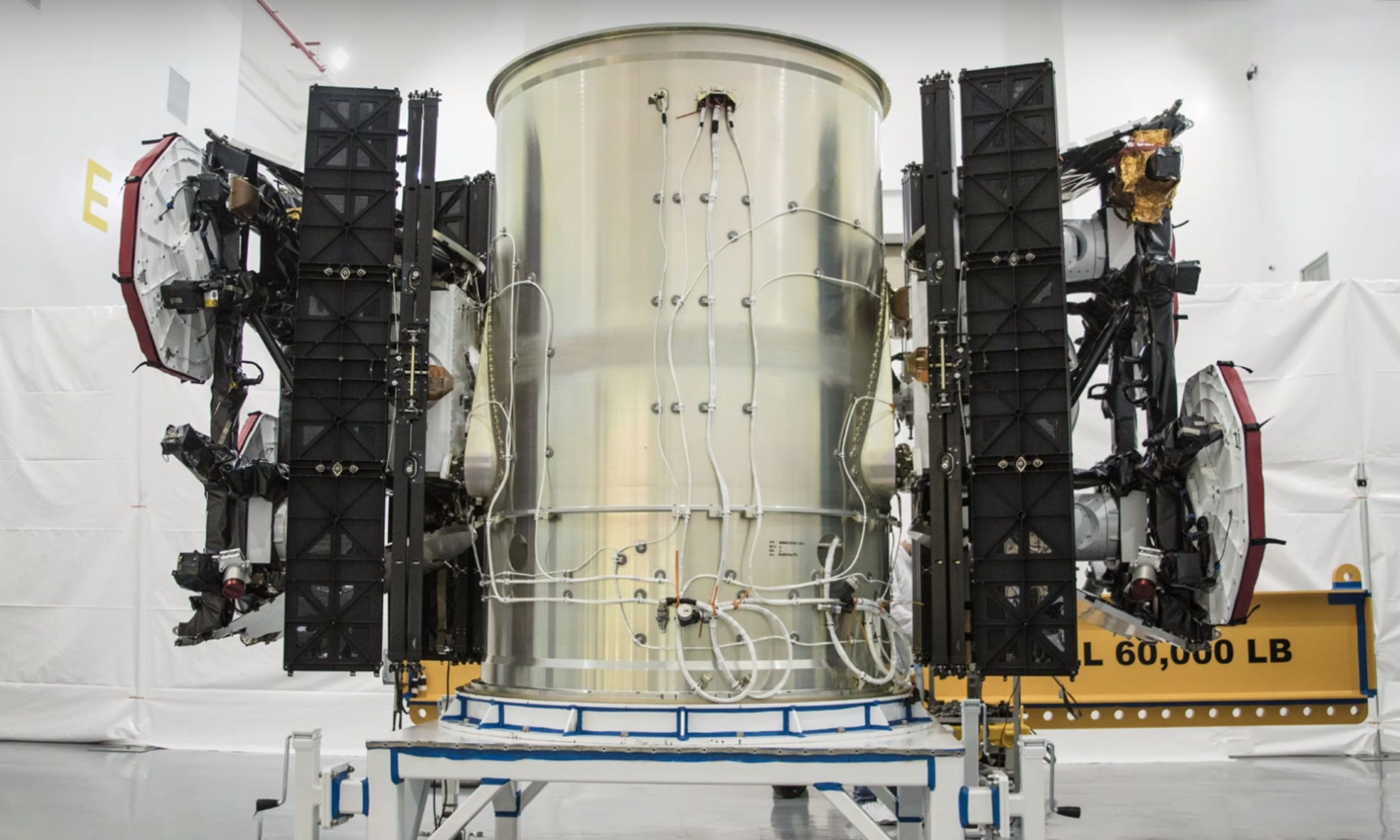

News
SpaceX’s first batch of Starlink satellites already in Florida for launch debut
According to an official statement, SpaceX’s satellite mass production is “well underway” and the first batch of operational Starlink satellites are already in Florida for their May 2019 launch debut.
Simultaneously, the FCC has granted SpaceX’s request to modify the deployment of its first 1584 Starlink satellites, permitting the company to lower their orbit from approximately 1150 km to 550 km (715 mi to 340 mi). A lower insertion orbit should improve Falcon 9’s maximum Starlink payload, while the lower operational orbit will help to further minimize any risk posed by orbital debris that could be generated by failed SpaceX satellites.
Above all else, SpaceX’s confirmation that the first batch of Starlink satellites are already in Florida drives home the reality that the company’s internet satellite constellation is about to become very real. Said constellation has long been the subject of endless skepticism and criticism, dominated by a general atmosphere of dismissal. There is no doubt that Starlink, as proposed, is an extraordinarily ambitious program that will cost billions of dollars to even begin to realize. SpaceX will have to find ways to affordably manufacture and launch ~11,900 satellites – together weighing something like 500 metric tons (1.1 million lbs) – in as few as nine years, start to finish.
As of November 2018, there are roughly 2000 satellites operating in Earth orbit, meaning that SpaceX’s full Starlink constellation would increase the number of functional satellites in orbit by a factor of almost seven. Just the first phase of Starlink (4409 satellites) would more than triple the number of working satellites in orbit. To meet the contractual requirement that SpaceX launch at least half of Starlink’s licensed satellites within six years of the FCC granting the constellation license, the company will need to launch an average of ~37 satellites per month between now and April 2024. By April 2027, SpaceX will either have to launch all ~2200 remaining Phase 1 satellites or risk forfeiture of its Starlink constellation license. Same goes for the ~7500 very low Earth orbit (VLEO) satellites making up Starlink’s second phase, albeit with their launch deadlines instead in November of 2024 and 2027.

In fact, if SpaceX wants to preserve the separate FCC license for its VLEO Starlink segment, it will actually need to build and launch an average of 100 satellites per month – 20+ per week – for the next five years. In no way, shape, or form is the monthly production of 100 complex pieces of machinery unprecedented. It is, however, entirely unprecedented – and by a factor of no less than 10 – in the spaceflight and satellite industries. Accomplishing that feat will require numerous paradigm shifts in satellite design, manufacturing, and operations. It’s hard to think of anyone more up to the challenge than SpaceX but it will still be an immensely difficult and expensive undertaking.
“Baby” steps
According to SpaceX, the first 75 operational Starlink satellites will be significantly less refined than those that will follow. Most notably, they will eschew dual-band (Ku and Ka) phased array antennas, instead relying solely on Ka-band communications. The second main difference between relates to “demisability”, referring to characteristics exhibited during reentry. The first 75 spacecraft will be less refined and thus feature a handful of components that are expected to survive the rigors of reentering Earth’s atmosphere, creating a truly miniscule risk of property damage and/or human injuries. Subsequent Starlink vehicles will incorporate design changes to ensure that 100% of each satellite is incinerated during reentry, thus posing a ~0% risk on the ground.
In a sense, the first 75 Starlink satellites will be an in-depth demonstration of SpaceX’s proposed constellation. Depending on how the satellites are deployed in orbit, SpaceX’s development team could potentially have uninterrupted access to the orbiting mini-constellation. There will also be constant opportunities to thoroughly test SpaceX’s network architecture for real, including general downlink/uplink traffic, surge management, satellite handoffs, and the laser interlinks meant to join all Starlink satellites into one giant mesh network.

SpaceX has yet to announce the precise number of Starlink satellites that will be aboard Falcon 9 on the rocket’s first dedicated internal launch. More likely than not, the constraining factor will be the usable volume of SpaceX’s payload fairing, measuring 5.2m (17 ft) in diameter. For Flight 1, 10-20 satellites is a reasonable estimate. Likely to weigh around 10,000 kg (22,000 lb) total, the first Starlink payload will be delivered to a parking orbit of ~350 km (220 mi), easily allowing Falcon 9 to return to SpaceX’s Florida Landing Zone or perform a gentle landing aboard drone ship Of Course I Still Love You (OCISLY). The satellites will use their own electric Hall thrusters to reach their final destination (550 km).
According to SpaceX CEO Elon Musk, the first Falcon 9 fairing reuse may also happen during an internal Starlink launch, although it’s unclear if he was referring to Starlink Launch 1 (Starlink-1) or a follow-up mission later this year.
For now, SpaceX is targeting a mid-May for its first dedicated Starlink mission, set to launch from Launch Complex 40 (LC-40). Up next for LC-40 is SpaceX’s 17th operational Cargo Dragon launch (CRS-17), delayed from April 26th and April 30th to May 3rd.
Check out Teslarati’s Marketplace! We offer Tesla accessories, including for the Tesla Cybertruck and Tesla Model 3.
Elon Musk
Tesla Supercharger Diner food menu gets a sneak peek as construction closes out
What are you ordering at the Tesla Diner?

The Tesla Supercharger Diner in Los Angeles is nearing completion as construction appears to be winding down significantly. However, the more minor details, such as what the company will serve at its 50s-style diner for food, are starting to be revealed.
Tesla’s Supercharger Diner is set to open soon, seven years after CEO Elon Musk first drafted the idea in a post on X in 2018. Musk has largely come through on most of what he envisioned for the project: the diner, the massive movie screens, and the intended vibe are all present, thanks to the aerial and ground footage shared on social media.
We already know the Diner will be open 24/7, based on decals placed on the front door of the restaurant that were shared earlier this week. We assume that Tesla Optimus will come into play for these long and uninterrupted hours.
The Tesla Diner is basically finished—here’s what it looks like
As far as the food, Tesla does have an email also printed on the front door of the Diner, but we did not receive any response back (yet) about what cuisine it will be offering. We figured it would be nothing fancy and it would be typical diner staples: burgers, fries, wings, milkshakes, etc.
According to pictures taken by @Tesla_lighting_, which were shared by Not a Tesla App, the food will be just that: quick and affordable meals that diners do well. It’s nothing crazy, just typical staples you’d find at any diner, just with a Tesla twist:
Tesla Diner food:
• Burgers
• Fries
• Chicken Wings
• Hot Dogs
• Hand-spun milkshakes
• And more https://t.co/kzFf20YZQq pic.twitter.com/aRv02TzouY— Sawyer Merritt (@SawyerMerritt) July 17, 2025
As the food menu is finalized, we will be sure to share any details Tesla provides, including a full list of what will be served and its prices.
Additionally, the entire property appears to be nearing its final construction stages, and it seems it may even be nearing completion. The movie screens are already up and showing videos of things like SpaceX launches.
There are many cars already using the Superchargers at the restaurant, and employees inside the facility look to be putting the finishing touches on the interior.
🚨 Boots on the ground at the Tesla Diner:
— TESLARATI (@Teslarati) July 17, 2025
It’s almost reminiscent of a Tesla version of a Buc-ee’s, a southern staple convenience store that offers much more than a traditional gas station. Of course, Tesla’s version is futuristic and more catered to the company’s image, but the idea is the same.
It’s a one-stop shop for anything you’d need to recharge as a Tesla owner. Los Angeles building permits have not yet revealed the date for the restaurant’s initial operation, but Tesla may have its eye on a target date that will likely be announced during next week’s Earnings Call.
News
Tesla’s longer Model Y did not scale back requests for this vehicle type from fans
Tesla fans are happy with the new Model Y, but they’re still vocal about the need for something else.
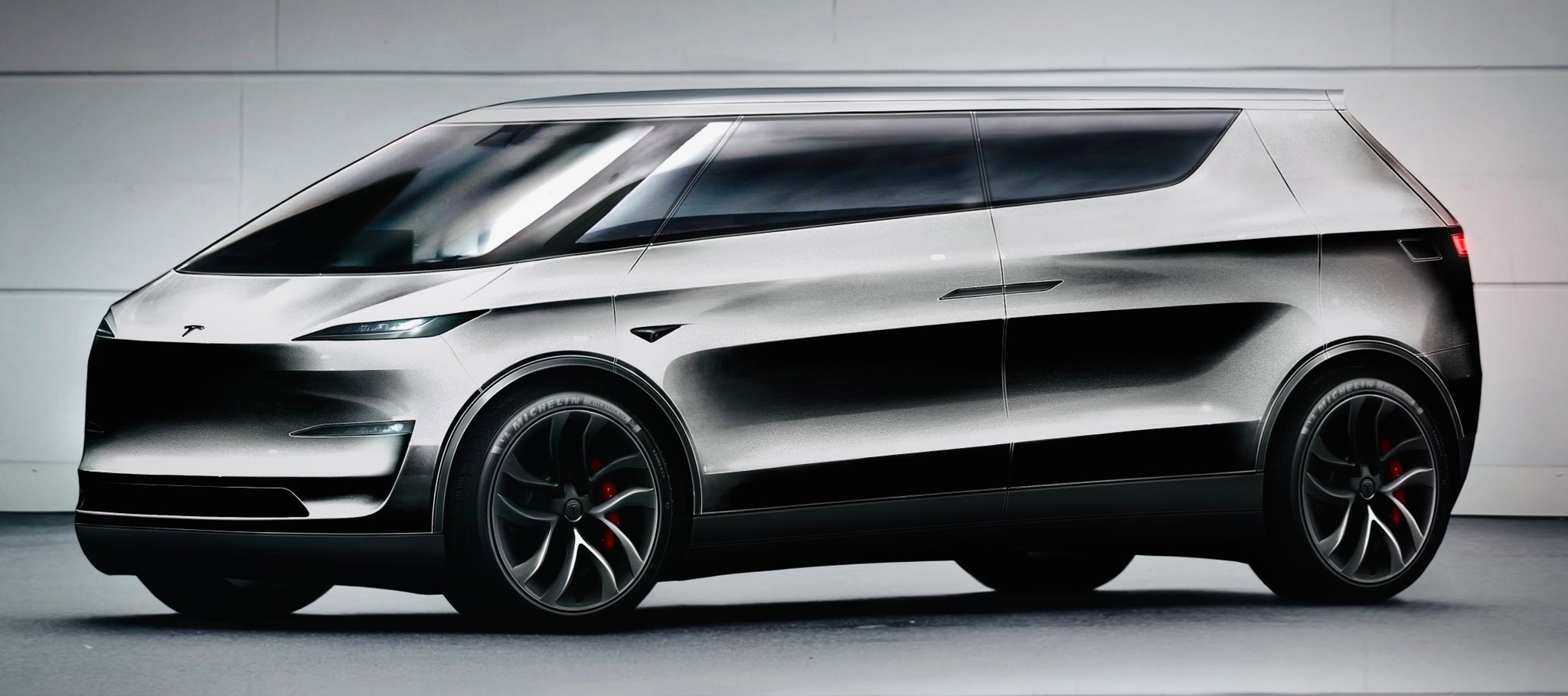
Tesla launched a slightly longer version of the Model Y all-electric crossover in China, and with it being extremely likely that the vehicle will make its way to other markets, including the United States, fans are still looking for something more.
The new Model Y L in China boasts a slightly larger wheelbase than its original version, giving slightly more interior room with a sixth seat, thanks to a third row.
Tesla exec hints at useful and potentially killer Model Y L feature
Tesla has said throughout the past year that it would focus on developing its affordable, compact models, which were set to begin production in the first half of the year. The company has not indicated whether it met that timeline or not, but many are hoping to see unveilings of those designs potentially during the Q3 earnings call.
However, the modifications to the Model Y, which have not yet been officially announced for any markets outside of China, still don’t seem to be what owners and fans are looking forward to. Instead, they are hoping for something larger.
A few months ago, I reported on the overall consensus within the Tesla community that the company needs a full-size SUV, minivan, or even a cargo van that would be ideal for camping or business use.
Tesla is missing one type of vehicle in its lineup and fans want it fast
That mentality still seems very present amongst fans and owners, who state that a full-size SUV with enough seating for a larger family, more capability in terms of cargo space for camping or business operation, and something to compete with gas cars like the Chevrolet Tahoe, Ford Expedition, or electric ones like the Volkswagen ID.BUZZ.
We asked the question on X, and Tesla fans were nearly unanimously in support of a larger SUV or minivan-type vehicle for the company’s lineup:
🚨 More and more people are *still* saying that, despite this new, longer Model Y, Tesla still needs a true three-row SUV
Do you agree? https://t.co/QmbRDcCE08 pic.twitter.com/p6m5zB4sDZ
— TESLARATI (@Teslarati) July 16, 2025
Here’s what some of the respondents said:
100% agree, we need a larger vehicle.
Our model Y is quickly getting too small for our family of 5 as the kids grow. A slightly longer Y with an extra seat is nice but it’s not enough if you’re looking to take it on road trips/vacations/ kids sports gear etc.
Unfortunately we…
— Anthony Hunter (@_LiarsDice_) July 17, 2025
Had to buy a Kia Carnival Hybrid because Tesla doesn’t have a true 3 row vehicle with proper space and respectable range. pic.twitter.com/pzwFyHU8Gi
— Neil, like the astronaut (@Neileeyo) July 17, 2025
Agreed! I’m not sure who created this but I liked it enough to save it. pic.twitter.com/Sof5nMehjS
— 🦉Wise Words of Wisdom – Inspirational Quotes (IQ) (@WiseWordsIQ) July 16, 2025
Tesla is certainly aware that many of its owners would like the company to develop something larger that competes with the large SUVs on the market.
However, it has not stated that anything like that is in the current plans for future vehicles, as it has made a concerted effort to develop Robotaxi alongside the affordable, compact models that it claims are in development.
It has already unveiled the Robovan, a people-mover that can seat up to 20 passengers in a lounge-like interior.
The Robovan will be completely driverless, so it’s unlikely we will see it before the release of a fully autonomous Full Self-Driving suite from Tesla.
Energy
Tesla launches first Virtual Power Plant in UK – get paid to use solar
Tesla has launched its first-ever Virtual Power Plant program in the United Kingdom.
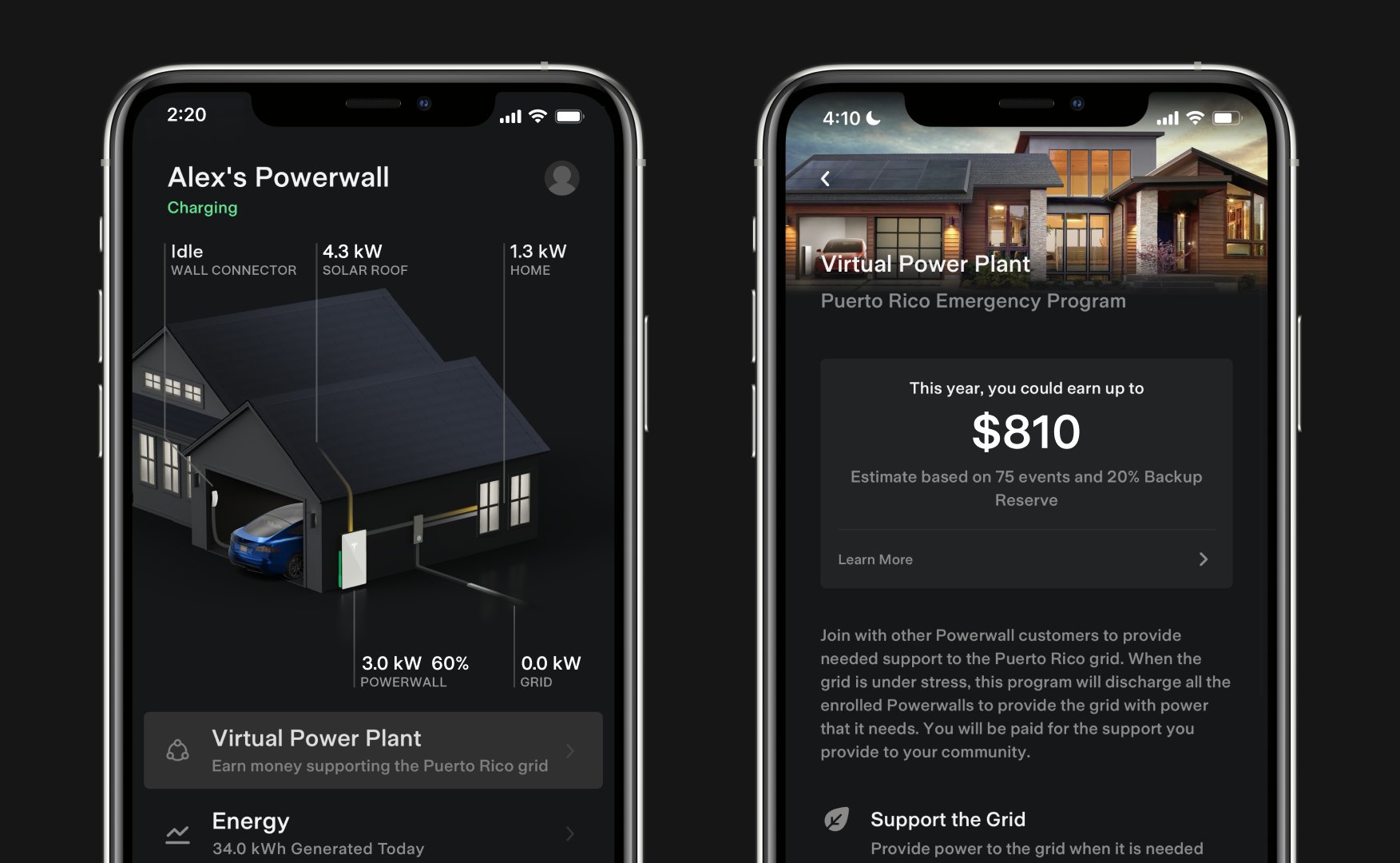
Tesla has launched its first-ever Virtual Power Plant program in the United Kingdom. This feature enables users of solar panels and energy storage systems to sell their excess energy back to the grid.
Tesla is utilizing Octopus Energy, a British renewable energy company that operates in multiple markets, including the UK, France, Germany, Italy, Spain, Australia, Japan, New Zealand, and the United States, as the provider for the VPP launch in the region.
The company states that those who enroll in the program can earn up to £300 per month.
Tesla has operated several VPP programs worldwide, most notably in California, Texas, Connecticut, and the U.S. territory of Puerto Rico. This is not the first time Tesla has operated a VPP outside the United States, as there are programs in Australia, Japan, and New Zealand.
This is its first in the UK:
Our first VPP in the UK
You can get paid to share your energy – store excess energy in your Powerwall & sell it back to the grid
You’re making £££ and the community is powered by clean energy
Win-win pic.twitter.com/evhMtJpgy1
— Tesla UK (@tesla_uk) July 17, 2025
Tesla is not the only company that is working with Octopus Energy in the UK for the VPP, as it joins SolarEdge, GivEnergy, and Enphase as other companies that utilize the Octopus platform for their project operations.
It has been six years since Tesla launched its first VPP, as it started its first in Australia back in 2019. In 2024, Tesla paid out over $10 million to those participating in the program.
Participating in the VPP program that Tesla offers not only provides enrolled individuals with the opportunity to earn money, but it also contributes to grid stabilization by supporting local energy grids.
-
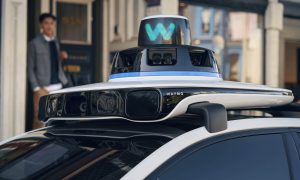
 Elon Musk1 day ago
Elon Musk1 day agoWaymo responds to Tesla’s Robotaxi expansion in Austin with bold statement
-
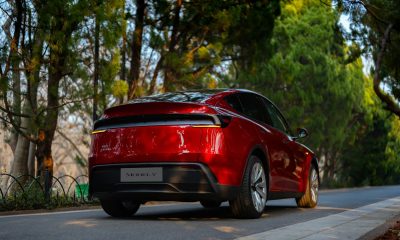
 News1 day ago
News1 day agoTesla exec hints at useful and potentially killer Model Y L feature
-
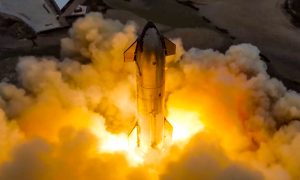
 Elon Musk2 days ago
Elon Musk2 days agoElon Musk reveals SpaceX’s target for Starship’s 10th launch
-

 Elon Musk3 days ago
Elon Musk3 days agoTesla ups Robotaxi fare price to another comical figure with service area expansion
-
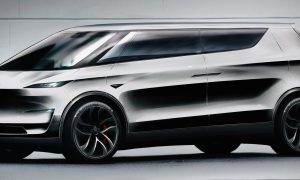
 News1 day ago
News1 day agoTesla’s longer Model Y did not scale back requests for this vehicle type from fans
-

 News1 day ago
News1 day ago“Worthy of respect:” Six-seat Model Y L acknowledged by Tesla China’s biggest rivals
-
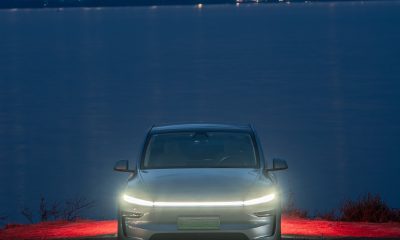
 News2 days ago
News2 days agoFirst glimpse of Tesla Model Y with six seats and extended wheelbase
-
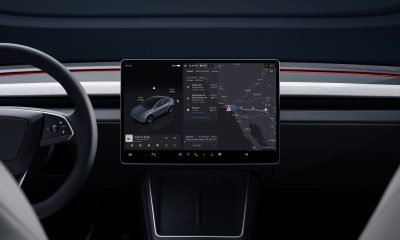
 Elon Musk2 days ago
Elon Musk2 days agoElon Musk confirms Tesla is already rolling out a new feature for in-car Grok


